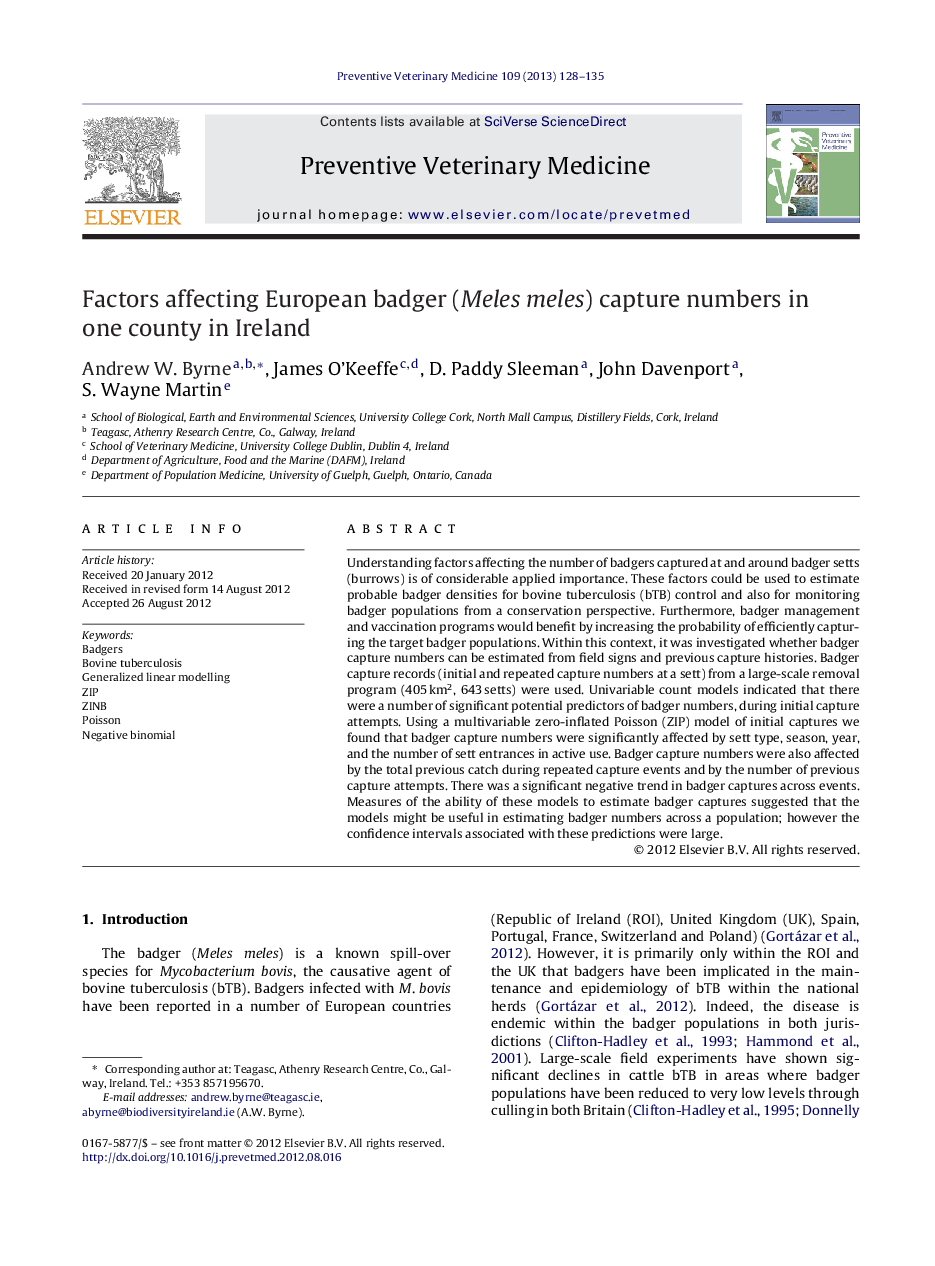| Article ID | Journal | Published Year | Pages | File Type |
|---|---|---|---|---|
| 5793939 | Preventive Veterinary Medicine | 2013 | 8 Pages |
Abstract
Understanding factors affecting the number of badgers captured at and around badger setts (burrows) is of considerable applied importance. These factors could be used to estimate probable badger densities for bovine tuberculosis (bTB) control and also for monitoring badger populations from a conservation perspective. Furthermore, badger management and vaccination programs would benefit by increasing the probability of efficiently capturing the target badger populations. Within this context, it was investigated whether badger capture numbers can be estimated from field signs and previous capture histories. Badger capture records (initial and repeated capture numbers at a sett) from a large-scale removal program (405Â km2, 643Â setts) were used. Univariable count models indicated that there were a number of significant potential predictors of badger numbers, during initial capture attempts. Using a multivariable zero-inflated Poisson (ZIP) model of initial captures we found that badger capture numbers were significantly affected by sett type, season, year, and the number of sett entrances in active use. Badger capture numbers were also affected by the total previous catch during repeated capture events and by the number of previous capture attempts. There was a significant negative trend in badger captures across events. Measures of the ability of these models to estimate badger captures suggested that the models might be useful in estimating badger numbers across a population; however the confidence intervals associated with these predictions were large.
Related Topics
Life Sciences
Agricultural and Biological Sciences
Animal Science and Zoology
Authors
Andrew W. Byrne, James O'Keeffe, D. Paddy Sleeman, John Davenport, S. Wayne Martin,
